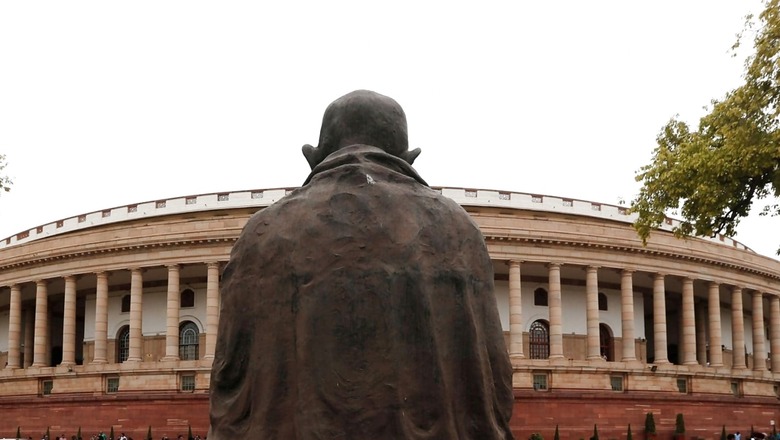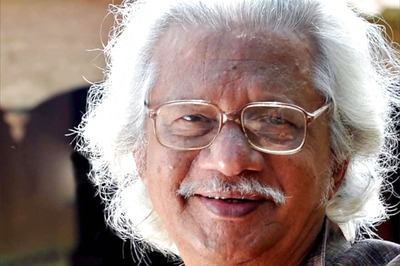
views
The Bill to repeal the three farm laws were whistled through Parliament on the opening day of Winter Session 2021 with the Union government saying no debate was needed on it since all were in favour of their nixing. Notwithstanding the speed of the Bill’s passage, there are elaborate rules for introducing a proposed legislation in Parliament and it has to go through several stages before it finally becomes the law of the land. In between are involved both Houses of Parliament, committees therein and the President of India.
Who Can Introduce A Bill In Parliament?
The only way to get laws passed in Parliament is through the introduction of Bills in either the Lok Sabha or the Rajya Sabha. Any Member of Parliament (MP) can introduce a Bill, if she is a Minister in the Union government, then the Bill is known as a Government Bill. If an MP other than a minister proposes a Bill, it is known as a Private Member’s Bill.
What Happens After A Bill Is Introduced?
A Bill has to pass through three stages in either House of Parliament, called ‘Readings’. The ‘First Reading’ involves the bringing of a motion for leave to introduce a Bill in the House. Once such motion is adopted, the Bill is tabled in the House. Since, a requirement is that it needs to be passed by both Houses, a Bill that originated in one House — and as passed by that House — has to be laid on the table of the other House. This falls under the First Reading stage in the other House.
The Lok Sabha Secretariat says that an “almost similar procedure is followed in Rajya Sabha in respect of Bills introduced in that House”. The Rajya Sabha Secretariat adds that since the setting up of the Departmentally-related Standing Committees in 1993, “invariably all Bills (barring some) are referred to the these committees for examination and report within three months”.
The ‘Second Reading’ — which itself consists of two stages — of a Bill is taken up after the said committee submits its report to the House. The ‘first stage’ sees the House go into the question of either taking the Bill into consideration or referring it to a Select Committee of the House or to a Joint Committee of both the Houses. It can also be decided to circulate the Bill to seek opinion on it. The ‘second stage’ of the ‘Second Reading’ involves the clause-by clause study of the Bill as reported by the Select/Joint Committee. Any amendments to it are moved and voted upon at this stage.
The ‘Third Reading’ consists of a discussion on the motion that the Bill, with or without amendments, be passed by the House or be returned to the House where it originated. If a Bill is passed by both Houses, it is sent to the President for his assent, after receiving which it is ready to become law.
Do Both Houses Have Equal Powers To Introduce Bills?
There is the category of proposed legislation known as Money Bills that can only be introduced in the Lok Sabha. According to Article 110 of the Constitution, a Money Bill is one which, among other things, deals with the imposition, abolition, etc. of any tax and the allocation of spending from the Consolidated Fund of India. In case of any disagreement whether a certain Bill is a Money Bill, the decision of the Speaker “shall be final”.
After Lok Sabha passes a Money Bill and it reaches Rajya Sabha, the Upper House is required to return it within a period of 14 days with or without any recommendations. It is up to Lok Sabha to accept or reject any or all of the recommendations of Rajya Sabha. But if the Rajya Sabha does not return the Bill within 14 days, it is considered as having been passed by both Houses of Parliament.
Then, there are Constitution Amendment Bills, which involve a special system for their passage. These Bills can be introduced in either House and are required to be passed by a majority of the total membership of the House
and of at least two-thirds of the members present and voting. Further, in specific cases, such Bills have to also be ratified by at least half of the State Assemblies after passage in Parliament.
What Happens If The President Withholds His Assent?
The final stage for a Bill to become a law requires it to receive the President’s approval. When a Bill passed by both the Houses is sent to the President, she or he may can either clear it or withhold their assent or return the Bill for reconsideration by Parliament. This power though does not extend to Money Bills. If a Bill returned by the President is again passed by the Houses, with or without the amendments suggested, she/he has to clear it. However, the President cannot withhold assent to a Constitution amendment Bill that has cleared Parliament.
So, How Long Does It Take For A Bill To Become Law?
A 2017 report by a legal think tank had said that it takes an average of 261 days for a Bill that is passed by Parliament and okayed by the President to effectively become law. The implementation of a Bill as law needs two more steps: the government has to notify ut in the Official Gazette and, second, rules have to be framed which will enable the practical application of the law.




















Comments
0 comment